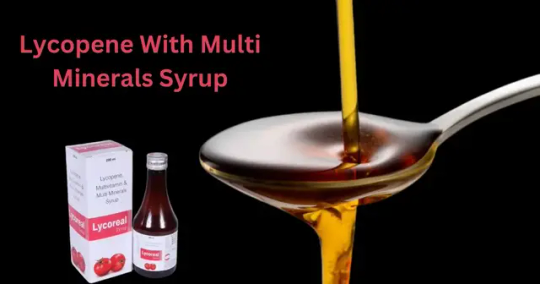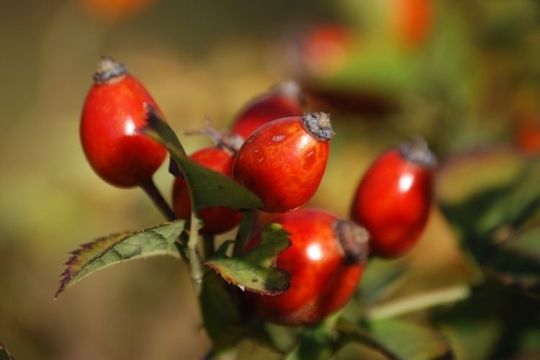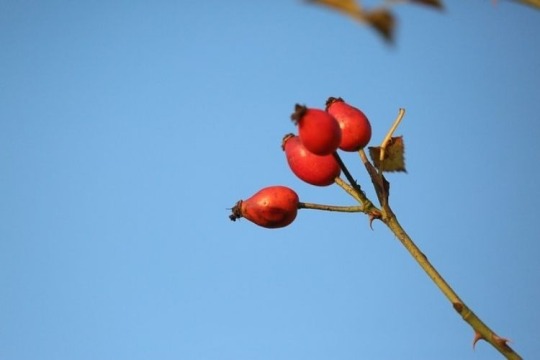#What is the method of using Lycopene syrup?
Text
Lycopene Multivitamin And Multimineral Syrup Uses & Side Effects
Hello friends, today we will talk about the use of Lycopene Multivitamin and Multimineral Syrup which is rich in So much nutrients which helps in improving our overall health.
Lycopene Multivitamin And Multimineral Syrup Uses & Side Effects
It contains vitamins, minerals and lycopene in abundance, which prove beneficial for our health. But despite all this, you should use Lycopene Multivitamin…

View On WordPress
#Does Lycopene Multivitamin and Multi Mineral Syrup interact?#Healthints#Healthints.com#How much lycopene should I take daily?#lycopene#Lycopene Multivitamin And Multimineral Syrup#Lycopene Multivitamin And Multimineral Syrup Side Effects#Lycopene Multivitamin And Multimineral Syrup Uses#Lycopene Multivitamin And Multimineral Syrup Uses & Side Effects#Lycopene multivitamin and multiminerals side effects#lycopene syrup#lycopene syrup side effects#lycopene syrup uses#multivitamin syrup#syrup#Uses of Lycopene Multivitamin and Multimineral Syrup#What is Lycopene Multivitamin and Multi Mineral Syrup?#What is lycopene?#What is the method of using Lycopene syrup?
0 notes
Text
Rosehip Benefits for Health and How to Use

Rosehip benefits for health and how to use for best effects. If you have never been in the habit of using a rosehip - read on and you will change your mind! The stems are small grainy, edible fruits that grow under the leaves of shrubs, called wild roses (usually of the Rosa rugosa species).
These plants are characteristic of the northern hemisphere, ie regions with temperate climates. The rosehip comes in many different colors, shapes, and sizes.
They are usually reddish to dark orange in color and have a slightly conical, spherical shape.
They can be used as fresh, dried, for making various teas, jams, syrups, essential oils, and even for making wine.
Rosehip is very widely used in traditional medicine. For example in the treatment of various diseases (inflammation, various pains, etc.), and current research confirms a number of beneficial effects of these herbs.
In today's article, we will get acquainted with the benefits of the rosehip for our health.
Rosehip benefits for health
Rosehip is a nutritionally concentrated food
The composition of 30 grams of rods contains the following values:
about 50 calories, 11g carbohydrates (7g fiber and about 1g sugars), 1g protein, and a negligible amount of fat.
The real value of the bars, as well as the rest of the fresh food, is their exceptional micronutrient and that is the following (in 30g) daily needs:
- 200% Vitamin C
- 30% for vitamin A
- 15% for manganese
- 10% for vitamin K
- 9% for vitamin E
- 6% for calcium
- 5% of magnesium
- 4% of potassium
In addition, bars are an excellent source of antioxidant components
These include the very important lycopene and beta carotene - pigments that give the specific color, but also ellagic acid, quercetin, and the mentioned vitamin C.
Antioxidants are the body's defense mechanism against free radicals.
These are harmful components that are constantly produced as metabolic waste in the body and oxidatively damage its various cells and tissues.
The body has mechanisms to produce a certain percentage of necessary antioxidants, but of course, it is not enough and still depends on the intake.
Permanent oxidative damage leads to processes of chronic inflammation or inflammation. All this in the long run is one of the main reasons for the development of chronic diseases.
It is worth mentioning that the nutrition of the rosehip depends on many factors in cultivation.
It depends on the soil, the method of cultivation and the processing techniques, so fresh mountain rosehip has a significantly higher concentration of vitamin C, compared to commercially obtained rosehip.
Rosehip seeds also contain amounts of glycosides, cyanidins, which can be toxic to humans. In fact, the seeds of many other fruits of the same family, such as apples, apricots, etc., also contain cyanides.
However, when in small quantities, this seed can not cause us any problems. In addition, seeds are often difficult to digest and absorb unless properly broken.
With rosehip, we get better immunity
This is quite logical to conclude, given that rose hips are one of the richest natural sources of vitamin C. Only a few fresh grains from the bars can meet the daily needs of an adult of this vitamin.
Studies show that vitamin C (ascorbic acid) is essential for stimulating the immune response. This increases the body's ability to defend itself against various threats.
In addition, vitamin C is a powerful antioxidant that suppresses chronic inflammatory processes.
Foods rich in vitamin C (fresh food) should be eaten more often, especially during periods of colds and flu.
Rosehip and its products are a great choice if we want to get more vitamin C in our body.
The rosehip is great against aging
Vitamin C, in addition to what we have already said, is also very important for skin health. Namely, it is one of the key elements in the metabolism of collagen synthesis - the most abundant protein in the human body.
This protein is crucial for skin health, but also for bone health. Vitamin K, which is also rich in rosehip, also contributes to healthier bones. Vitamin C protects the skin through its antioxidant and anti-inflammatory action, along with other antioxidant components of the rosehip.
In addition, the rosehip contains (seeds) and polyunsaturated fatty acids that can contribute to healthier skin, ie protect it from pro-inflammatory components, such as UV rays, cigarette smoke, pollution, etc.

One study shows that the use of rosehip-based powder can visibly reduce skin wrinkles and increase its elasticity and moisture.
Rosehip can be very helpful in arthritis
This is perhaps the most famous and beneficial effect of the rosehip. Regular consumption of these fruits can alleviate the symptoms of arthritis, such as pain, numbness, inflammation, etc.
This is thought to be due to the ability of rosehip to block the activity of certain proteins in cartilage cells that are a major cause of joint tissue degradation.
The antioxidant and anti-inflammatory effects of rose hips can also reduce chemotaxis. Chemotaxis is the transport or transfer of immune cells into joint tissues.
Some studies show that regular use of certain rosehip supplements can increase the mobility or mobility of people with rheumatoid arthritis by as much as 25%.
Better cardiovascular health by consuming rosehip
Eating rosehip can significantly improve the health of our heart. It does this by lowering blood pressure and cholesterol levels in the body.
A study of more than 30 volunteers found that drinking rosehip-based beverages could lower blood pressure and total cholesterol.
Additionally, such drinks, and the fruits themselves, are rich in fiber and a range of antioxidants.
All of these components are very good for improving our cardiovascular health.
The rosehip has a potential anticancer effect
Some laboratory studies show an anticancer effect on the rosehip.
For example, a 2015 study published in the journal Cancer found that treating malignant cells with rosehip extract proved to be particularly successful in stopping and slowing their growth.
This extract has been able to selectively reduce specific MAPK and AKT, enzymes responsible for stimulating the growth of malignant cells in breast cancer.
Ways of using the rosehip
As already mentioned, the rosehip can be consumed as fresh, dry, as tea, or as supplements based on them.
We need to remember that fresh shrimp are best eaten when they are softer.
The standard recommended dose is about 10g per day, consumed twice. Over 40g per day, rosehip can cause side effects, such as digestive discomfort.
Tea can be made from both fresh and dried rose hips. Rosehip tea is a great way to get the most out of their nutrition.
How to make rosehip tea that will retain all the nutrients and healing properties?
Put 200 to 300 grams of dried or fresh rose hips in 1 liter of water. Leave the water on the fire until it boils.
Once it boils, remove the pan from the heat and let the liquid stand for a few hours or overnight.
The next day, crush the softened fruits with a fork or mash them with a blender and return them to the liquid.
If necessary, add a little more water and put the pan back on the fire until it boils. Then remove from the heat, allow to cool, strain, and drink in moderation throughout the day.
Tea can be sweetened with honey or cinnamon and lemon, but it is best to drink it without any additives because it is very tasty without them.
It is important to mention that rosehip tea should be drunk by breastfeeding mothers, because through milk vitamin C reaches the baby, thanks to which it will be healthier and resistant to colds and other viral infections.
Rosehip tea for immunity
Take three tablespoons of chopped, dried rosehips, soak them in 0.5 liters of cold water, and let them stand for three days.

Then put them to boil for half an hour, leave it to cool, then strain and mix with the same amount of milk, sweeten with a teaspoon of honey.
Drink this tea for immunity always before bedtime. Tea strengthens the body, especially in the elderly.
Rosehip tea for dry coughs and colds with excellent results and easy to prepare.
Put a tablespoon of finely chopped dried rosehips, pour 2 dl of boiled water, cover and leave for 15 minutes. Strain, sweeten with a teaspoon of honey, and drink before meals, three times a day.
If a cold is the cause of the cough, drink it more often several times a day. It is important that it is always freshly prepared, not overheated. Be sure to consult your doctor about rosehip supplements.
Conclusion
Rosehip is an herb that has been used for a long time with a wide range of benefits for our health.
Its composition is extremely good for human health. It contains carbohydrates, proteins, fiber, and very little fat.
As for vitamins and minerals, vitamins A, C, E, K are present in the rosehip, as well as the minerals calcium, potassium, magnesium, manganese, and others.
The direct health benefits of the rosehip are as numerous as those for immunity, a healthier heart, bones, skin, and even anti-cancer properties.
It can be consumed as a tea, for making jams, syrups, essential oils, and for making wine.
In any case, a rosehip is a healthy option in the diet that you should use because you have nothing to lose, you can only improve your health.
Read the full article
0 notes
Text
New Post has been published on Tight & Healthy Vagina
New Post has been published on http://tightvaginatips.com/vaginal-infections/how-to-get-rid-of-yeast-infection-naturally/
How to Get Rid of Yeast Infection Naturally
It is estimated that three out of every four women are likely to suffer a vaginal yeast infection at some time in their lives. After you have suffered vaginal yeast infection once, it becomes considerably more likely that you will do so again. Particularly if you treat the condition on a peripheral level, rather than attacking the root cause of your yeast infection. In this article we will focus on a healthy diet and some natural substances that can help you to get rid of yeast infection.
Foods to avoid if you suffer from recurrent yeast infections
Sugar:
Since yeast feeds on sugars it is important to reduce intake of sugar in your daily diet. This will significantly reduce your susceptibility to yeast infections. People who suffer from badly controlled diabetes are far more prone to yeast infections than others. Higher level of sugar in the bloodstream provides exactly the sustenance the yeast needs to thrive.
Avoid sugar reach products. This rule does not apply only to commercially produced, purified sugars. It can be applied to all sugars including natural sugars. For example those contained in fruit juice, honey, maple syrup, molasses, corn syrup, fructose and so on.
Yeast products or baked foods:
Avoid yeast rich foodstuffs and drinks. This will not necessarily cause any problem for you as long as you are healthy with a strong, resilient immune system.
But when you are suffering from yeast infection, products such as brewers yeast, pizzas, pastries, soy sauce, leavened bread, beer, wine all provide an extra support to the Candida Albicans that is already in your system.
‘Mold’-based and fermented foods:
This is a similar category to the one above and include foods like cheese, mustard, vinegar and condiments that are based on vinegar. By consuming foods like this, you are actually providing extra ammunition for the Candida infection in your body to expand still further.
Again, when you are completely healthy, these foodstuffs will do you no harm whatsoever. But it is probably best to avoid them wherever possible if you are susceptible to yeast infections.
Dairy products:
Since one of the primary ingredients of milk is lactose, you should cut out any products made with milk. Because your body treat lactose as it would any other sugar. This is why you should avoid any products made with milk. Take your coffee or tea without milk. If you are used to have milk in your drink, try to switch to soy milk. Also avoid ice cream and full milk yogurt.
Foods that can help you to get rid of yeast infection
As you can see, if you want to reduce your susceptibility to yeast infections in the future, you should reduce many foodstuffs, or even remove them from your diet completely. Therefore, it is reasonable to ask what foodstuffs should you eat?
To give you some ideas, we made the following list of foodstuffs that are not likely to provide any sustenance to Candida Albicans. These are also foods which have a positive effect in helping you to get rid of yeast infections.
Gluten free foods:
Try to eat ‘staple’ gluten free foods wherever possible. For example, rice or corn instead of foodstuffs that contain gluten such as barley and wheat.
Also try to eat non-meat based protein alternatives such as tofu:
Or at least make sure that all of the meat-based products you eat are completely organically reared. Keep in mind that many non-organic meat products are likely to be high in antibiotic chemicals.
Whole grains:
When you are looking for alternatives, whole grains like brown rice can be a very healthy option. This kind of foodstuff will not exacerbate your susceptibility to yeast infections.
Raw green vegetables:
are always perfect for inclusion in your daily healthy diet. They contain vitamins and many of the much needed trace elements. On the other hand, they do not contain the potentially harmful sugars that you will find in some fruits, for example. In case you have a problem to take your vegetables raw, try steaming them.
Some oily fish:
such as tuna, mackerel and herring will provide you a tasty and highly nutritional alternative to meat products. They are high in essential fatty acids.
How to treat recurrent vaginal yeast infections
When you suffer from persistent chronic vaginal yeast infections there is no way that you can solve a problem permanently only with anti-fungal lotions and creams. The same applies to anti-fungal diet. The correct approach to take to getting rid of your recurring yeast infection once and for all is to address your problem on two levels.
Firstly, you tackle the problem systematically by trying to reduce the overgrowth of Candida Albicans cells throughout your body. You would do this by making the lifestyle changes and applying an anti-fungal diet as highlighted above.
The second method of treatment for your yeast infection would be topical, by using creams or suppositories. On this level, there are also various natural treatments that you can apply to any vaginal yeast infection. These treatments will help to bring both immediate relief and a reduction in the severity of your present condition.
Natural substances that are deadly for Candida Albicans
There are some natural chemical substances that are present in many foodstuffs. These phytochemicals are deadly for Candida Albicans cells. For example: allicin in garlic, sulforaphane in broccoli or lycopene in oranges and grapefruit. Or Caprylic acid which is in fact a medium chain fatty acid that is naturally found in coconut and palm oil.
You can also take lactobacillus acidophilus in a capsule or powder form twice a day to get rid of an existing vaginal yeast infection. Or once a day to help keep future infections at bay. This is a form of a good bacteria that can be found in live yogurts and help to boost your body’s natural defenses against future yeast infections.
Anti Candida Diet – Infographic:
Trusted resource: www.cdc.gov
back to the top
0 notes